According to the French National Authority for Health, SCTs are: “standardised tools used to assess the clinical reasoning of the professional carrying out the assessment, and in particular his ability to make relevant decisions in complex cases, or in situations of ‘uncertainty’, by comparing them with the opinions of a panel of experts”.
In other words, the SCTs wants to assess your decision-making when faced with a case on which there is no consensus. The teaching objective is therefore not to check that you choose the one and only right option, but rather to assess your ability to mobilise a network of knowledge to respond to an uncertain situation.
To play an SCT that is part of an exam, go to the “My assessments” tab in your learner space and click on “Play test”.
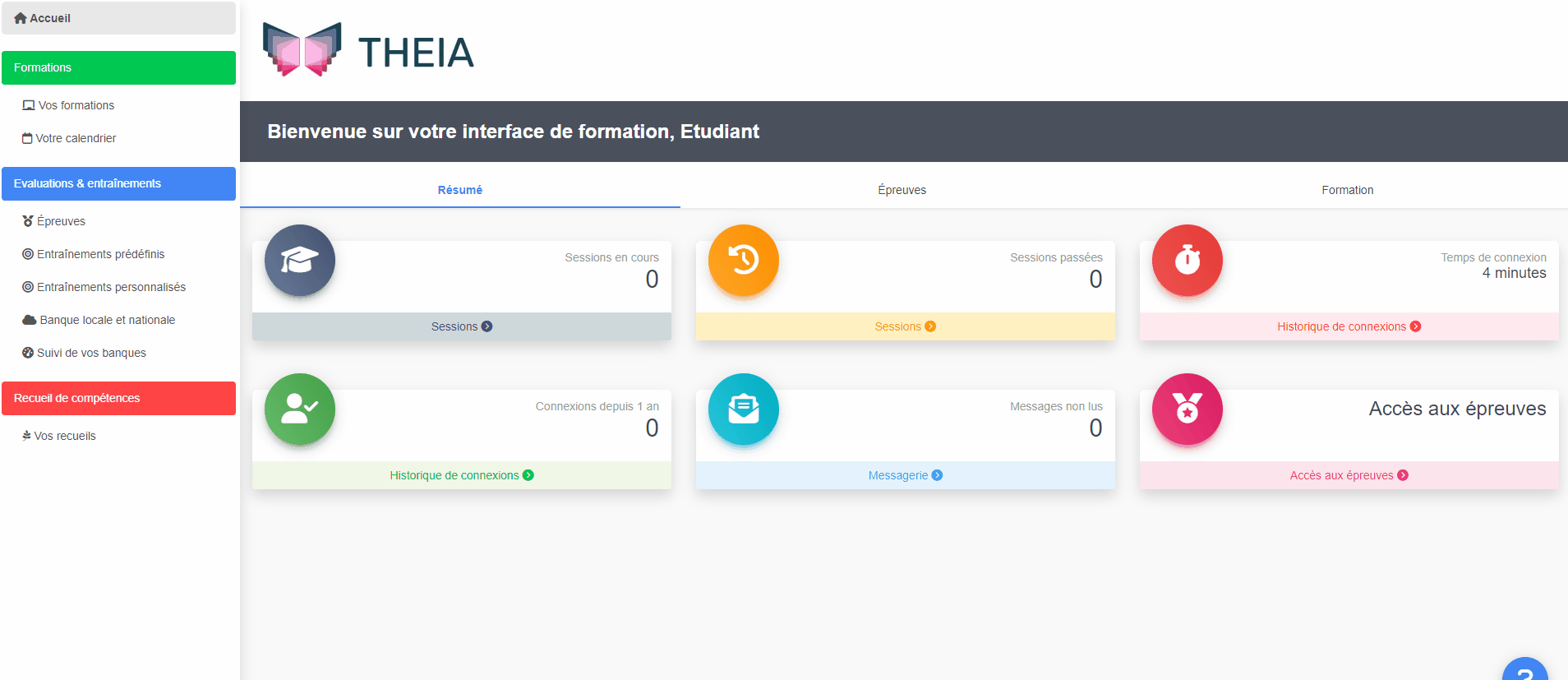
SCT is based on a short vignette presenting a case to be studied. This case is followed by several hypotheses providing additional information. You are asked to rate the relevance of each hypothesis in the light of the new information provided, using a Likert scale (the values of which are defined by the designer). Your answers are compared with those of “experts”, professionals to whom the case has been presented and who have also chosen an option.
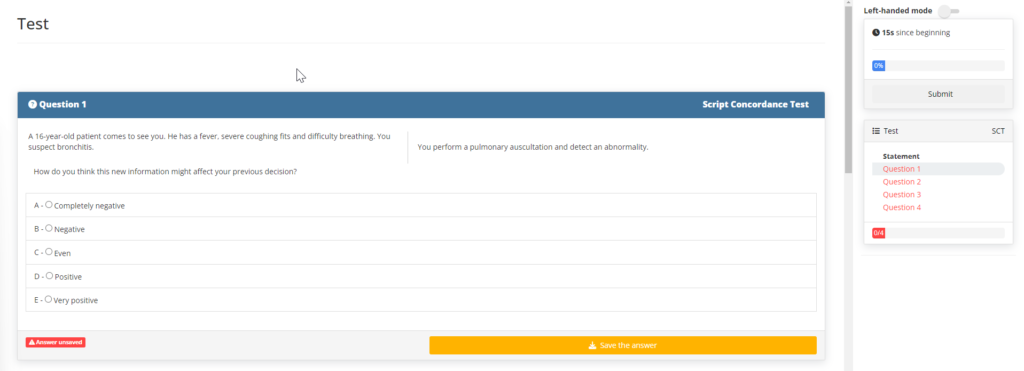
There are several ways to train on the SCT mode on the THEIA platform. The first is to play a training session that has already been created and includes one or more SCTs.
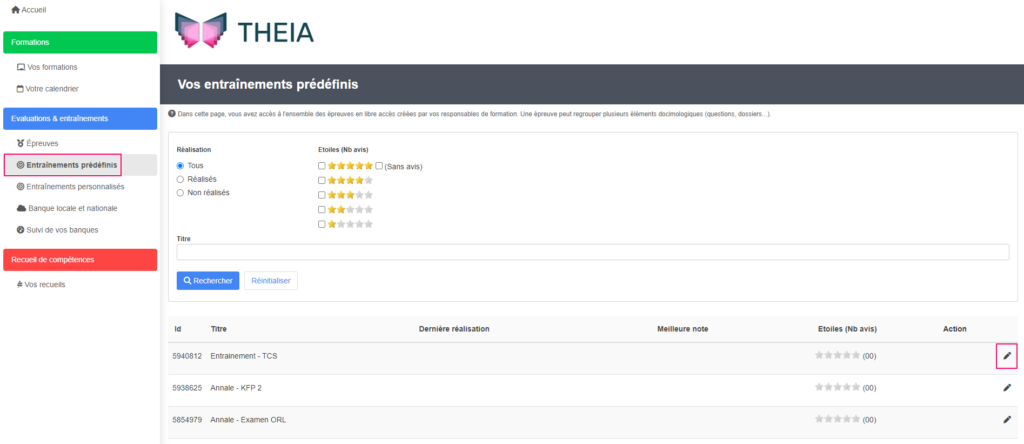
Pour cela, vous pouvez vous rendre sur l’onglet “Entrainements prédéfinis” de votre espace apprenant.
Another option is to create your own training by choosing the type of content.
To do this, go to the “Predefined training” tab in your learner area and choose the content you want to train on.
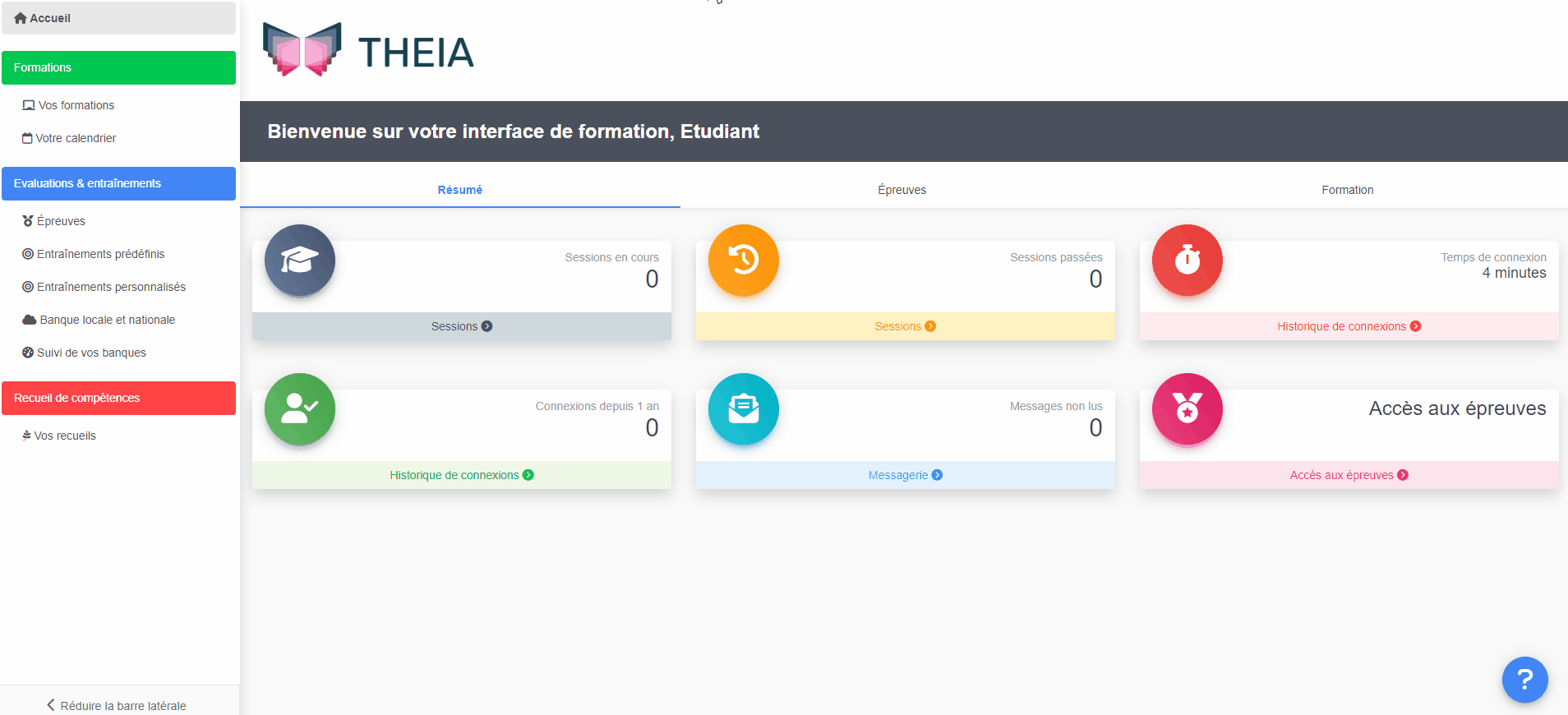
Finally, you can access the content available in your local bank directly, without having to create a personalised workout. This option allows you to choose the type of content you wish to access.
To do this, go to the “Local and national bank” tab in your learner space and filter on the content you want to play.
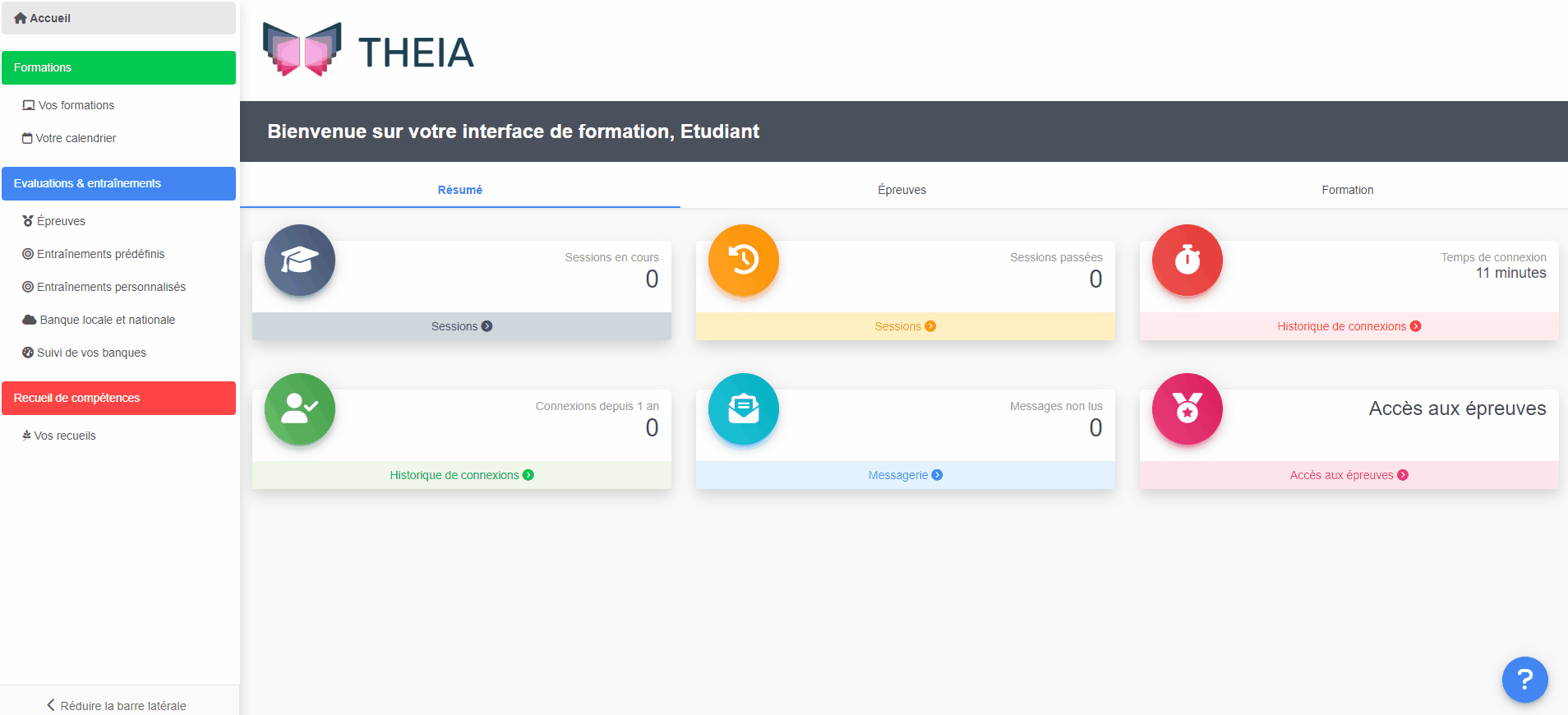
If you want to find out more, have a look at the tutorial below: “Training on THEIA”.